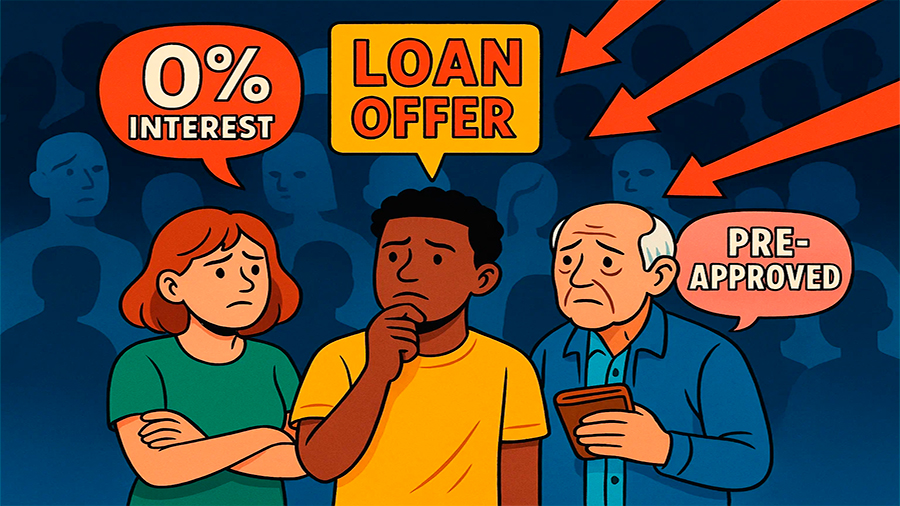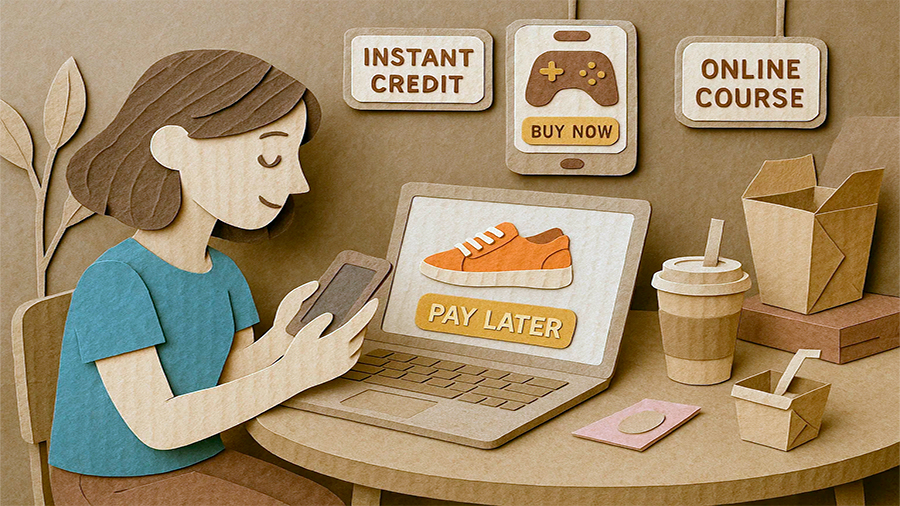How Marketing Influences the Propensity to Borrow
Not long ago, borrowing was a cautious step. You planned, compared rates, met with a bank representative, and signed physical paperwork. It was a deliberate decision. Now, borrowing is often just a click. You’re shopping online, and suddenly a pop-up offers “pay in 4 installments, no interest.” You weren’t even thinking about a loan — but here it is. Convenient. Immediate. Encouraged. That’s how marketing has transformed credit. It no longer waits quietly in the bank — it chases you across websites, social media, and even inside mobile games. And the result? A rising generation of consumers who see debt not as a risk but as a routine part of spending.
Marketing Makes Borrowing Feel Normal
Modern credit marketing is subtle, smooth, and emotional. It doesn’t push interest rates or repayment schedules. It speaks to how you want to feel: empowered, modern, confident. Ads for credit cards show international vacations, stylish clothes, smiling families — not the cost breakdown or payment terms. Even loan apps use cozy language like “we’re here to help,” “you deserve it,” or “treat yourself.” These aren’t just slogans. They’re calculated emotional triggers designed to make you borrow without hesitation.
When borrowing is emotionally framed as a reward, the perceived weight of the decision disappears. Instead of thinking, “Can I afford this?” the internal dialogue shifts to, “Why not enjoy this now?” That’s the real power of marketing — not forcing decisions, but reshaping how we view them entirely.
Common Emotional Hooks in Loan Ads
| Marketing Theme |
Message Example |
Emotional Impact |
| Deserved luxury |
“You’ve earned it. Don’t wait.” |
Reward and self-worth |
| Urgency |
“Limited time offer!” |
FOMO (fear of missing out) |
| Empowerment |
“Take control of your finances today.” |
Confidence and security |
| Relief |
“Finally, some breathing room.” |
Stress reduction |
These emotional angles are powerful because they speak to what’s missing in someone’s life — and suggest that credit is the fastest way to fix it. It creates an illusion of progress, even if you’re simply moving debt around.

Borrowing Embedded in Everyday Life
One of the most dramatic shifts in recent years is how borrowing is offered. No longer confined to banks or credit card companies, it’s now embedded into daily digital life. Buy a pair of sneakers? There’s a “pay later” option at checkout. Order food online? Some platforms offer instant credit with deferred payment. Even online courses and gaming apps allow for micro-financing now.
This embedding has a psychological effect. If every service you use encourages a small loan, debt becomes invisible. The fewer steps between the offer and approval, the more casual the experience feels. And once you’ve done it once, it becomes easier to do it again. That’s how a generation of “micro-loans” adds up to serious monthly obligations without any single decision feeling major.
Where Borrowing Hides in Plain Sight
| Platform |
How Credit Is Offered |
| Retail E-commerce |
Installment payments on nearly all products |
| Streaming & Tech Bundles |
Monthly payments for devices with media access |
| Mobile Games |
Credit lines for in-game currency or purchases |
| Transportation Apps |
Deferred payments for ride packages |
These offers blur the line between spending and borrowing. When every purchase can be financed, it becomes harder to track what you truly owe — and easier to lose control.
Over-Indebtedness as a Side Effect
The long-term result of these small, feel-good loans? Over-indebtedness. It doesn’t happen overnight. It happens gradually — with one low monthly payment here, another deferred fee there, a credit card top-up when needed. Consumers start building a portfolio of micro-debts that, together, eat away at income. And because they weren’t framed as “big loans,” they’re rarely taken as seriously until repayment becomes unmanageable.
Unlike mortgages or auto loans, many of these newer credit formats don’t come with thorough planning or income verification. They’re easy to get and easy to accumulate — until they’re not. When late fees, interest hikes, or wage garnishment kick in, the reality hits fast. But by then, many consumers are already juggling too much.

Vulnerable Groups and Aggressive Offers
Marketing doesn’t affect everyone equally. Data shows that younger consumers, low-income households, and people with limited credit history are most targeted by aggressive borrowing offers. Lenders see these groups as high-opportunity markets — especially because they’re often underserved by traditional banks. But that also makes them more exposed to risky products with less transparency.
Some platforms use behavioral data to push loan offers at the exact moment a user shows hesitation at checkout. Others offer no-interest promotions that flip into high-rate debt if not paid on time. These aren’t just sales techniques — they’re carefully timed nudges based on predictive algorithms. It’s marketing driven by data — and it often leads to poor decisions by those who can least afford them.
How to Stay Informed in a Borrowing-Fueled Economy
Marketing isn’t going away. In fact, as embedded finance grows, borrowing offers will likely become even more seamless and persuasive. That means consumers need to build defenses: not against credit itself, but against impulsive borrowing driven by emotional marketing. You can still borrow — but only when it fits your goals, not someone else’s bottom line.
Practical Questions Before You Click “Borrow”
- Would I still want this item if no financing were offered?
- What is the total cost — after fees, interest, and late penalties?
- Is this purchase urgent, or is marketing making it feel urgent?
- Do I already have other loans I’m repaying?
- Can I cover the payments if my income drops for a month or two?
Slowing down to ask these questions gives you power. It reintroduces pause and control into a system designed for speed and ease.
The Conclusion
Marketing has made borrowing feel less like a decision and more like a habit. Through emotional hooks, instant approvals, and constant exposure, lenders have turned credit into something casual — even friendly. But debt is still debt, even when it’s packaged nicely. While borrowing can help in the right context, it should never feel automatic. The more we recognize how marketing shapes our borrowing habits, the better equipped we are to say yes for the right reasons — and to say no when it matters most.







